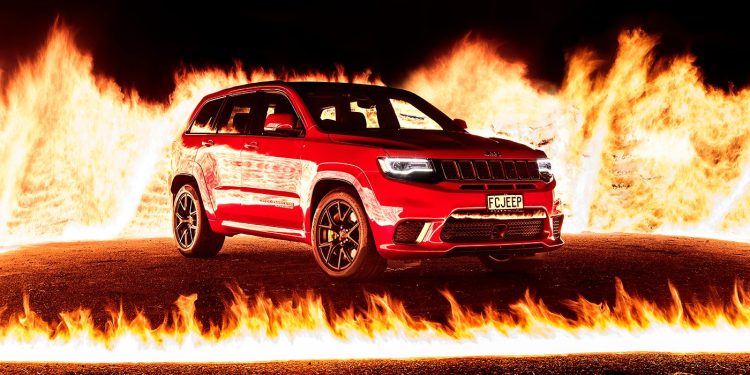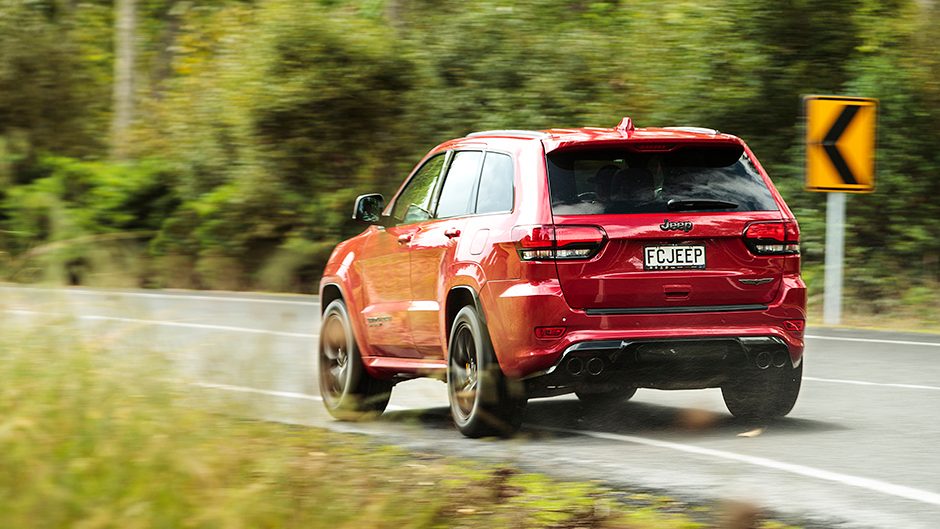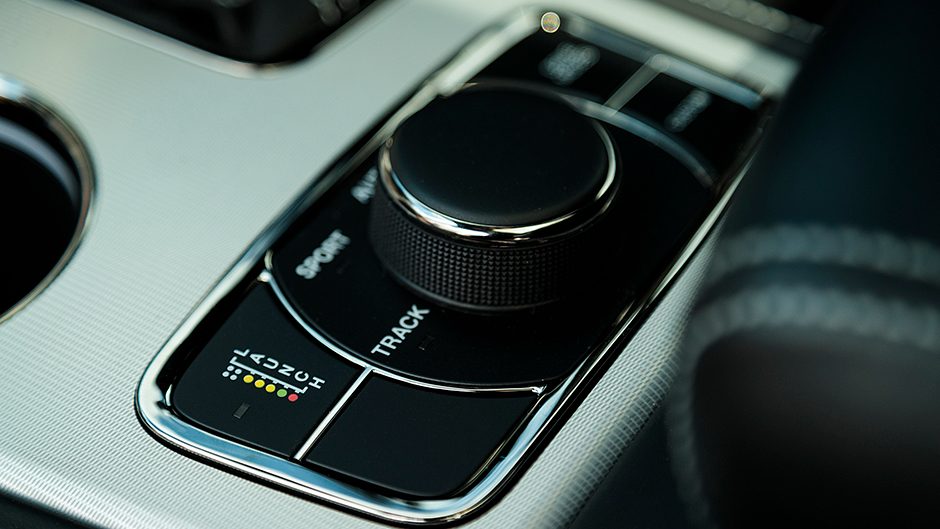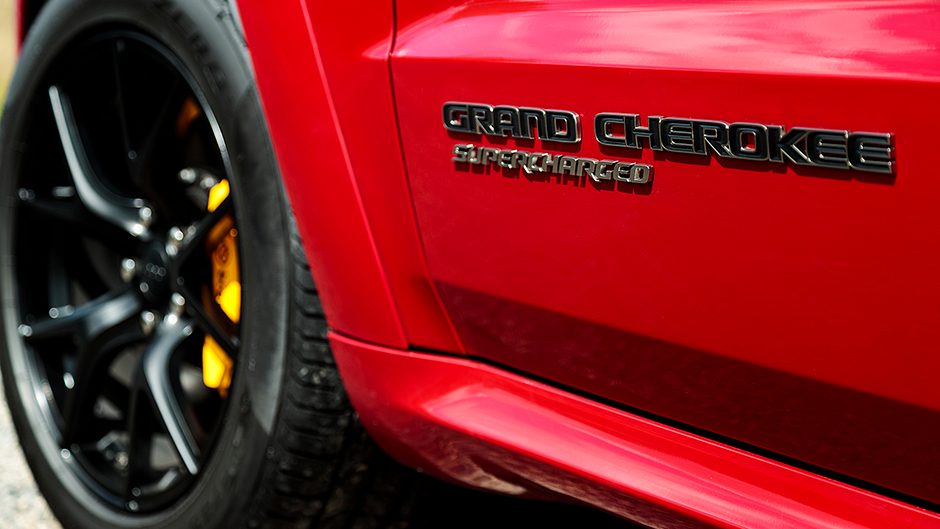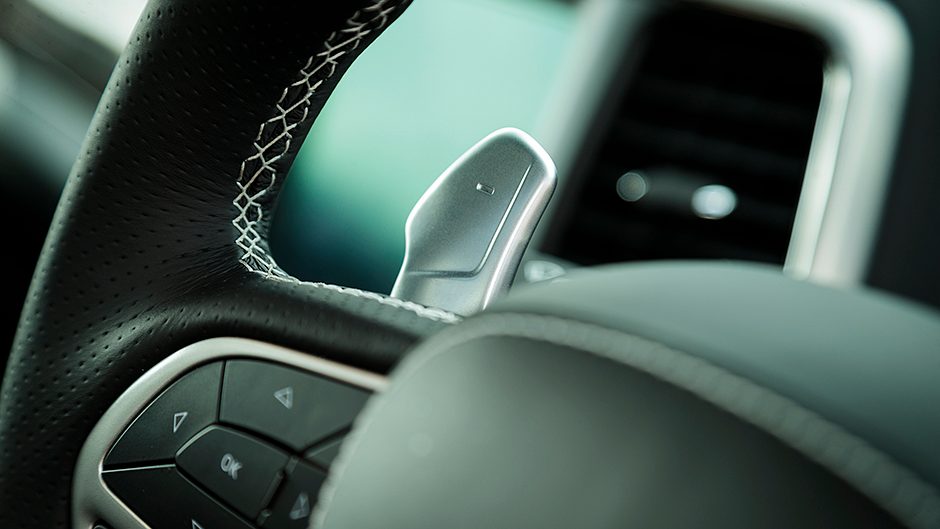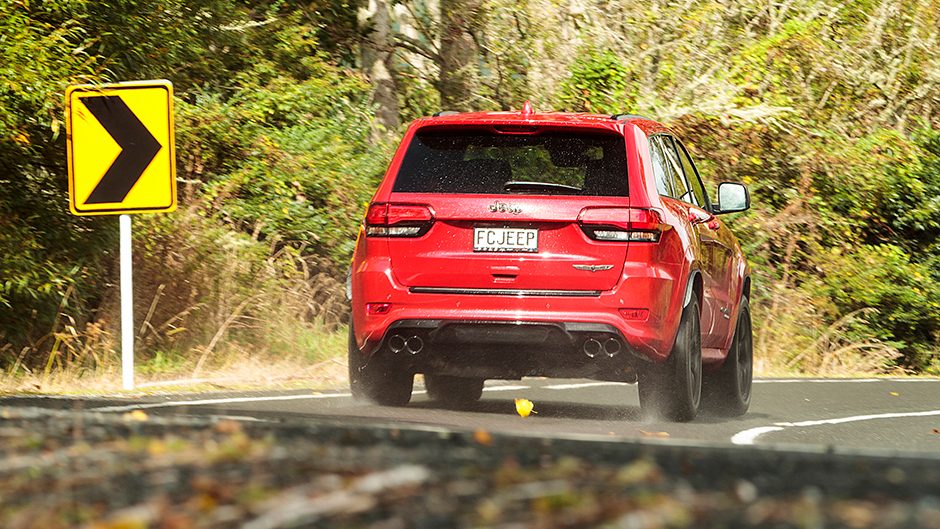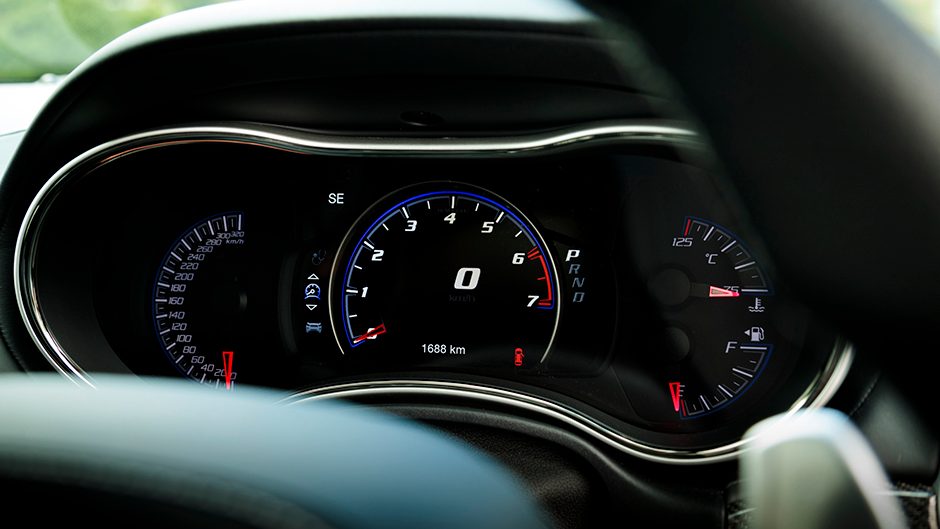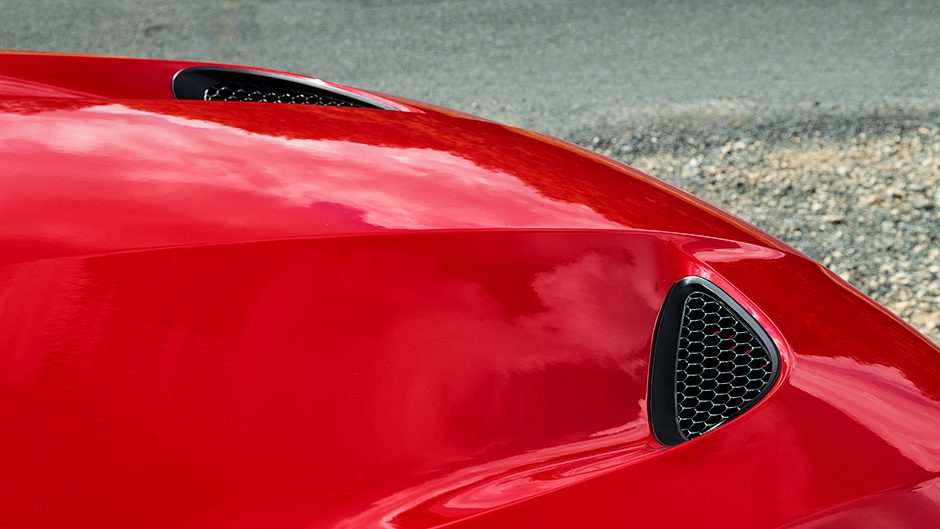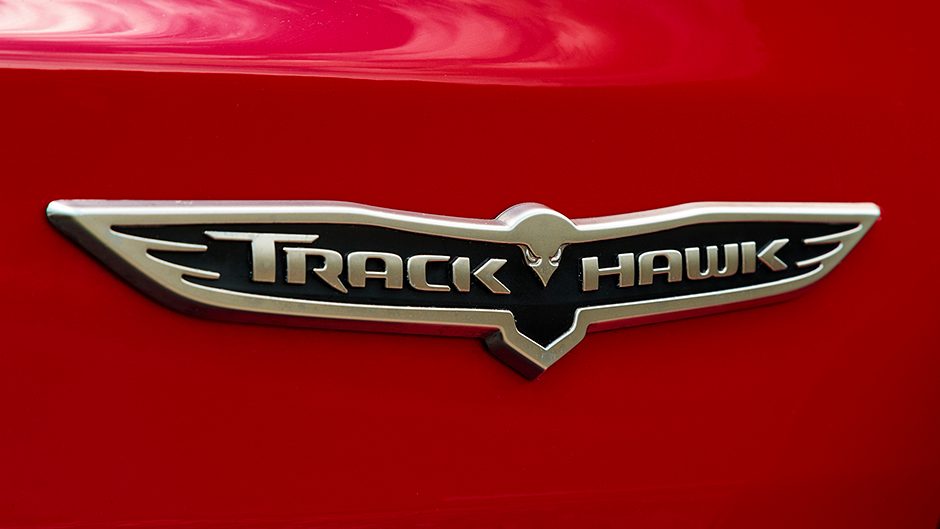2018 Jeep Grand Cherokee Trackhawk review
Words Kyle Cassidy | Photos Tom Gasnier
Jeep’s latest Grand Cherokee looks innocent enough, like most other highbrow SUVs in the car park, until you prod the starter button and awaken the Hellcat. Meet the 707 horsepower Trackhawk.
Jeep is probably not the manufacturer you would expect to be making the most powerful SUV in the world right now. Selling the most capable rig of conquering the Mojave desert, maybe, but challenging the likes of the Porsche Cayenne Turbo and BMW X5M? Nah, surely not.
However, Jeep is part of the big Fiat Chrysler mash-up, which also includes Dodge. Readers might remember we drove the Dodge Challenger Hellcat with its 700 horsepower supercharged Hemi, and now those family ties see the Hellcat doing duty under the hood of the Grand Cherokee.
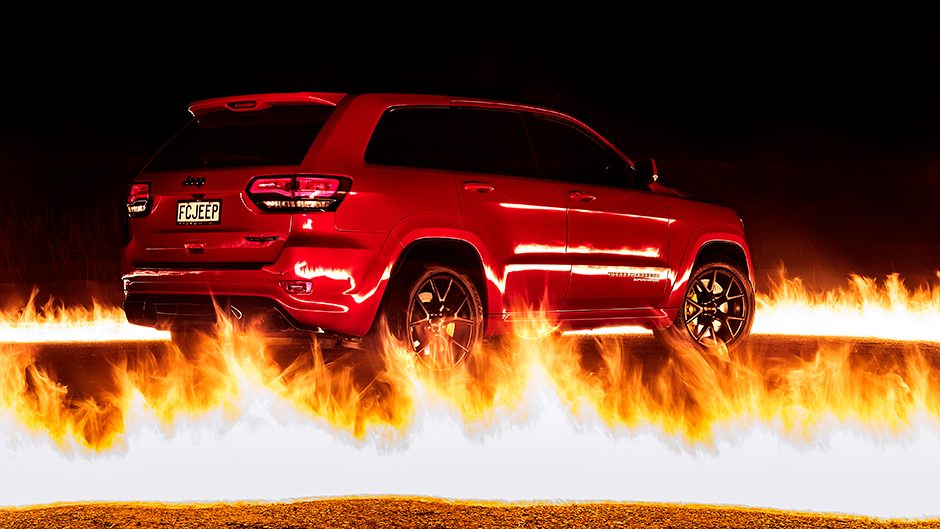
Some of the Trackhawk’s claims are fairly lofty, including 0-100km/h in 3.6sec, an 11.6sec standing quarter and a top speed of 290km/h. And there’s quite a price tag to match. Where the regular V8 Grand Cherokee Limited is $83K, the Trackhawk is $169,990. That’s a hefty premium over the less manic, 6.4-litre SRT, which is still available at $111,540. But then it can’t claim to be the world’s most powerful SUV, can it?
In the Trackhawk, the Hellcat punches out 527kW and 874Nm of twist. Those of you paying attention will realise that’s a few Newts down on the Challenger and it’s to do with the packaging of the Jeep’s exhaust system. Still, the Hellcat is the same mean mutha with its cast iron block, forged-steel crank, forged rods and pistons, and heat-treated aluminium-alloy cylinder heads. This is a donk that is made to withstand punishment and the abuse is administered by the twin-screw supercharger sitting atop the hellish Hemi.
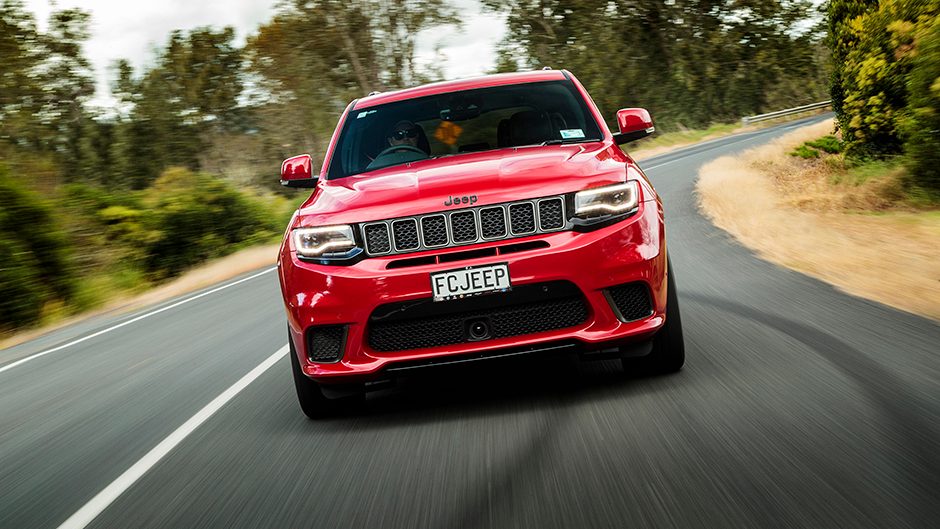
This sucks 2.3 litres of air per revolution and rams it down the V8’s big 92mm gullet with a force of 11.6psi. To ensure constant outputs, there’s a charge air cooler and a separate cooling system for the intake inlet as well. Blown eights love air and the Trackhawk sucks plenty of it. Gone are the usual fog lights, replaced by inlets to feed the induction system on one side, and an oil cooler on the other.
They also crave hydrocarbons and so TH’s fitted with two high-flow fuel pumps to ensure this ravenous hellion remains well nourished. With the blown Hemi haunting the engine bay, the rest of the Grand needs protecting from its demonic forces. Cue a Hellcat proofing regime for the driveline; there’s a bigger chain and forged steel sprockets in the transfer case, and the rear driveshaft, half shafts and diff have all been reinforced. There is no low range on this GC, but the permanent AWD system includes an electronically controlled limited-slip rear differential, while the ZF eight-speed has been toughened and blessed with an 1100Nm rating.
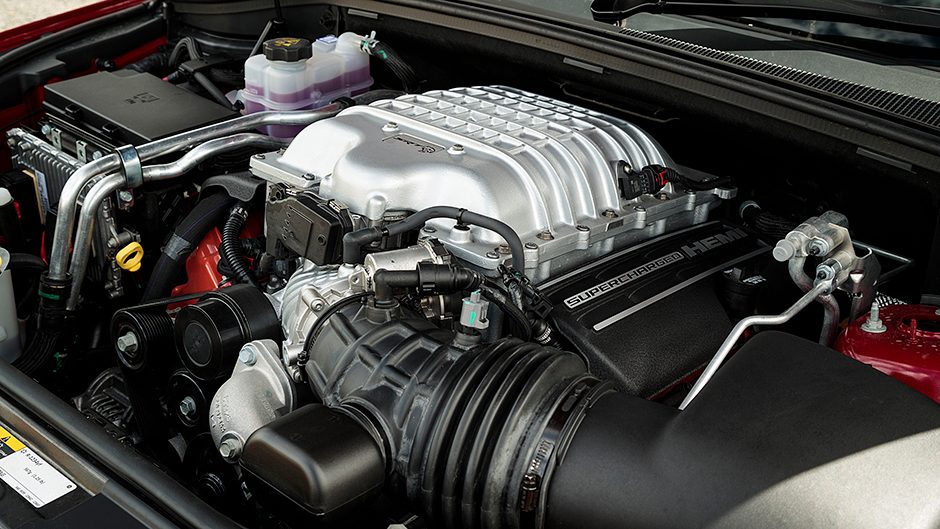
The Trackhawk starts with a hiss and a roar, the Hemi’s howl vented by dual 2.75-inch pipes and a quartet of XL tips. And it’s loud with no exhaust flap or quiet mode. Yet with all its brimfire and fury, it’s a refined brute, polite almost. There’s a lump in the idle, but otherwise the Trackhawk is surprisingly civilised, more refined at everyday driving than the AMG E 63 S we drove again briefly this month. Trackhawk gets stiffer springs front and rear than the ‘regular’ SRT, yet it’s hardly firm thanks to the variable nature of the Bilstein adaptive dampers, and there’s a decent sidewall to the big 20-inch hoops.
The auto is smooth, there’s no annoying stop/start function, it’s quickly out of the blocks and there’s bulk basement torque for easy cruising. Even the turning circle is okay, the steering light and breezy, and on full lock the drivenline remains bind-free and the diff doesn’t get grumpy. In short, it’s as easy to commute in as a regular Grand.
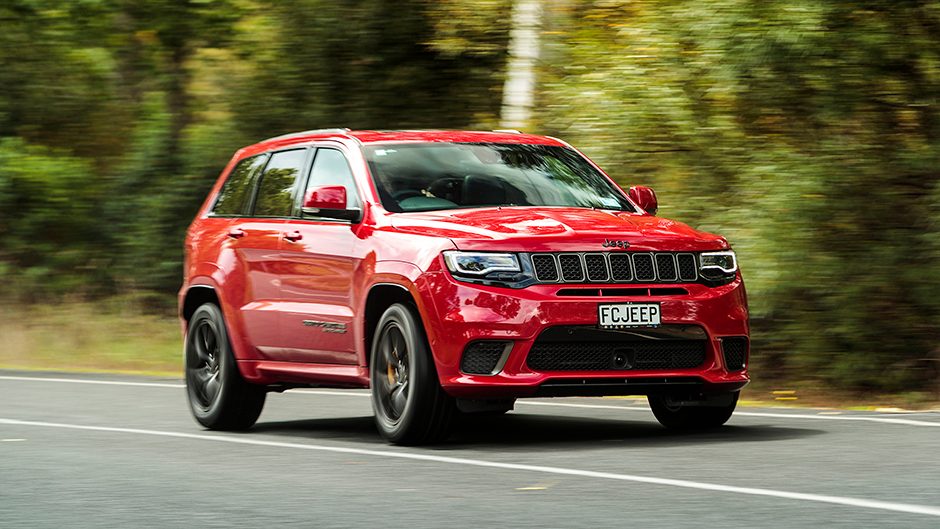
There are various drive modes, the Auto setting primed for the everyday, but this isn’t an eco setting as the throttle response is always crisp and the auto quick to drop a cog with just a hint of extra gas to get you moving. The whine of the supercharger is only audible for the first couple of thousand revs but then the bellowing, roaring thunder of the pipes dominates.
Moving further afield and through to the Sport mode, things begin to get really quite interesting. While the AWD set-up doesn’t feature an actively variable torque split, each drive mode does alter the division, with Sport shunting five per cent more of the drive rearwards from the usual 40/60 divvy up. Other changes see the auto’s shift times halve, the stability control relax, the suspension tighten and your heart rate rise.
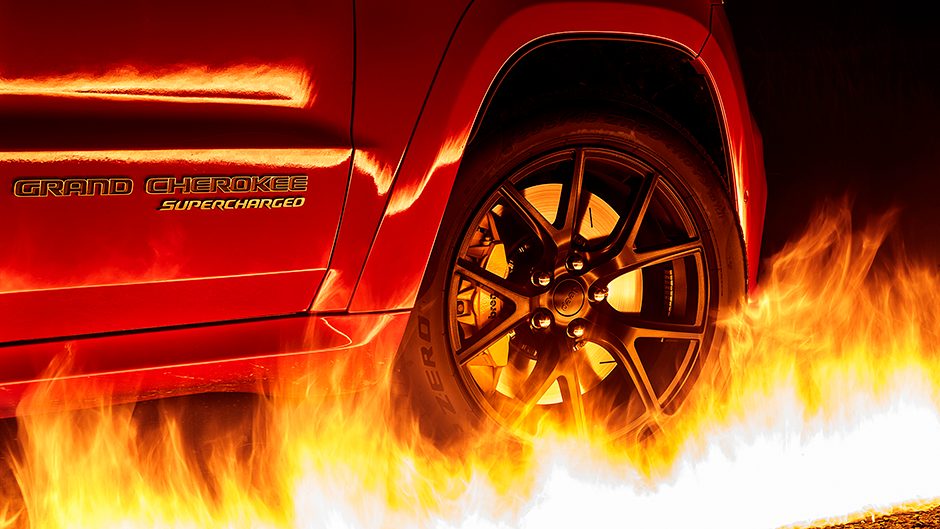
There are some immense forces at work here; the mass horsepower, the plentiful velocity and 2500kg of thundering Trackhawk to manage. Physics was a subject well beyond me, so ignorance is bliss when driving the Trackhawk, an experience that’s challenging, slightly terrifying but truly engaging.
It’s phenomenally fast for something so big; the Hellcat pulls hard from 2500rpm, revs powerfully to 6000rpm and just keeps storming as it chews through the gears. The throttle response is sharp and there’s grunt literally everywhere. With pace added so easily, Jeep has bolted on a big Brembo set-up with 400mm two-piece rotors on the front, complete with six-piston calipers, and a 350mm/four-piston caliper combo on the rear. While the pedal tactility isn’t that forthcoming, these exorcise the Hellcat demon effectively and stand firm to constant abuse.
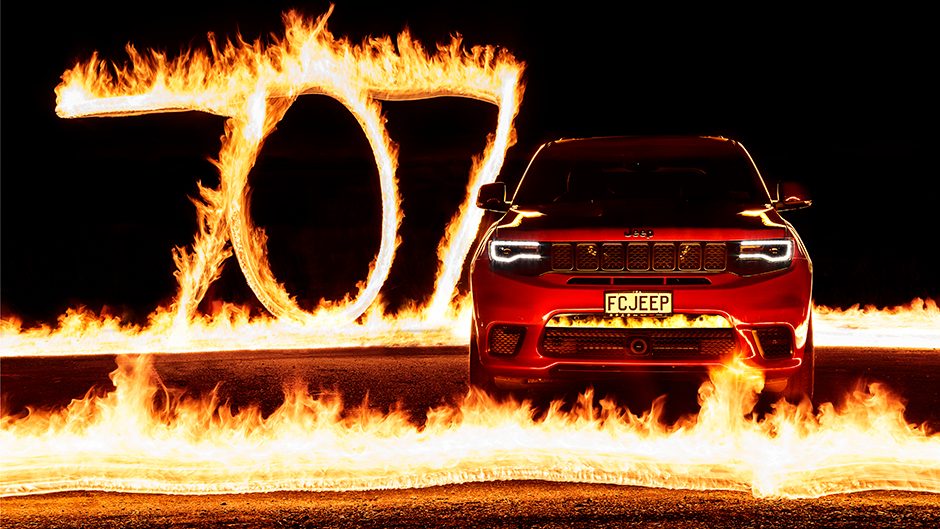
Along with a Track drive mode, there’s a custom set-up to tune the components to your preference. We liked the trans, AWD and steering in their Track settings to access the forceful 160MS shift speeds, route 70 per cent of the drive rearwards and give the helm more meaningful resistance. Both the stability and suspension are best in Sport to provide a back-up and some bump tolerance.
The Trackhawk relies on an age-old solution for getting American horsepower to stick and that’s masses of rubber with a foot of Pirelli’s finest at each corner, the Scorpion Verdes measuring up at 295/45ZR20. And the resulting front end resilience is mighty impressive considering the forces at work trying to unstick it. There’s a lot of gravity acting on the front axle. The Hellcat is some 50kg heavier than the 6.4 Hemi in the SRT, and with its massive sump for its eight-litre oil capacity, it sits up high.
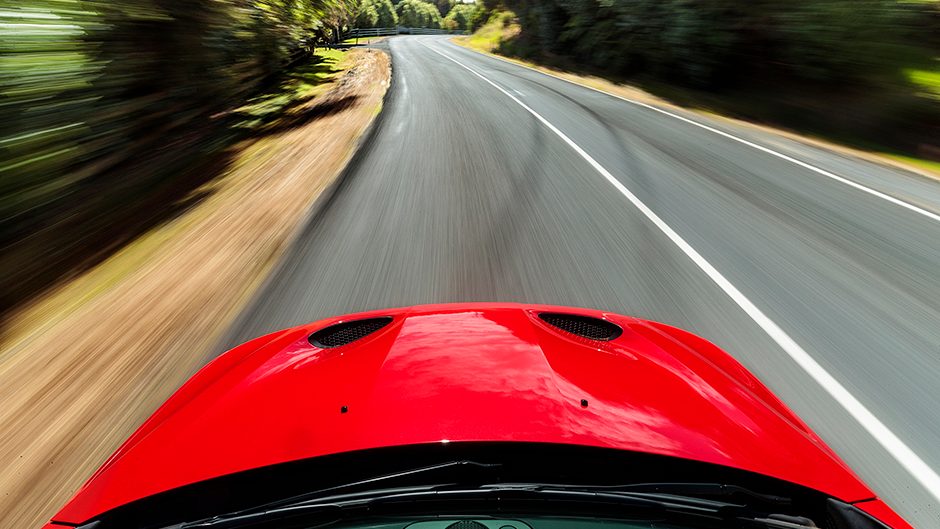
So there are some unruly forces to deal with in a corner, but the Pirellis go well and, along with a helpful and consistent amount of steering heft, there’s a good measure of how stretched the reserves of stick are. Respect the beast and it won’t bite but it’s never too far from slipping the leash and turning feral. Trailbrake into a bend and the rear will start to rotate, which is unnerving but can be helpful.
This rotation helps relieve the fronts of the cornering stresses, tightening the line and, thanks to the assured traction, you can then nail the gas on the exit. It’s very satisfying when you get it right, but slightly terrifying if you don’t because even the stability system has a bit of a time trying to reign in two and half tonnes moving at warp speed. The Trackhawk is still mighty quick cross country even when you’re not whipping it along; the engine has torque to pull fast in fifth and sixth gears, and the set-up demolishes back roads at 100km/h where it feel likes it’s just dawdling.
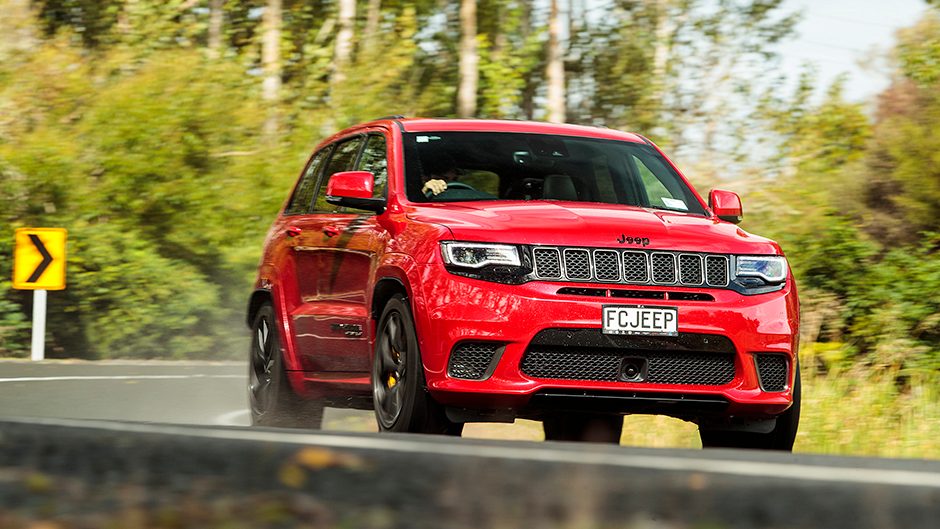
As to that 0-100km/h in 3.6sec claim, it does come close thanks to Launch Control. This optimises all the hardware for maximum thrust with the supercharger building boost while the engine management limits spark and fuelling to enable the V8 revs to rise. You can increase the engine speed launch rate, 2500rpm being optimal apparently. The LC is easy to initiate but it’s hard to actually keep the Trackhawk stalled up on the brake.
It can start inching forward before you release the hounds but when it does come together, the thunder truck leaps forward and a few neck snapping gear changes later it managed a best of 3.78sec, with a full load of gas on board. Factor in its 3200kg tow rating, its big boot and five-seat capacity, this is an all-round performer. It’s furiously thirsty, of course, an average in the mid 20s is more realistic than the quoted 16L/100km, but a 93L tank means you’ll only need to visit the filling station once a week.
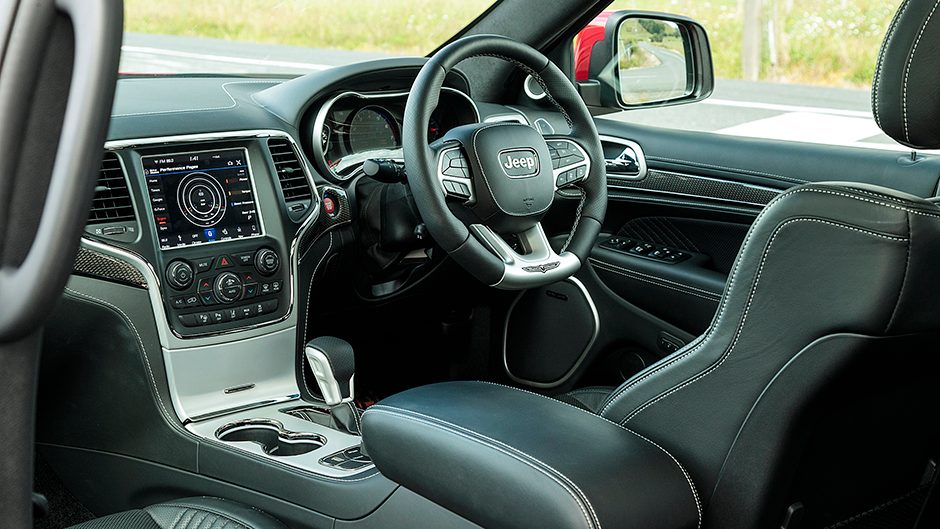
Apart from the roaring soundtrack, the Trackhawk is otherwise fairly subtle, with similar wheel arch flares, side sills and a vented bonnet like the SRT’s, while the badging is limited to the ‘supercharged’ script on the doors and a Trackhawk emblem on the tailgate. It’s well dressed inside too, with most of the surfaces covered with soft touch finishes, masses of leather and added chrome and carbon detailing.
The Nappa- and suede-trimmed seats are well bolstered but comfortable, and both vented and heated. There’s a configurable seven-inch display in the instrument cluster and the 8.4-inch touchscreen infotainment system features Performance Pages that display an array of performance timers and gauges to drive you to distraction. More useful is the standard Apple CarPlay and Android Auto.
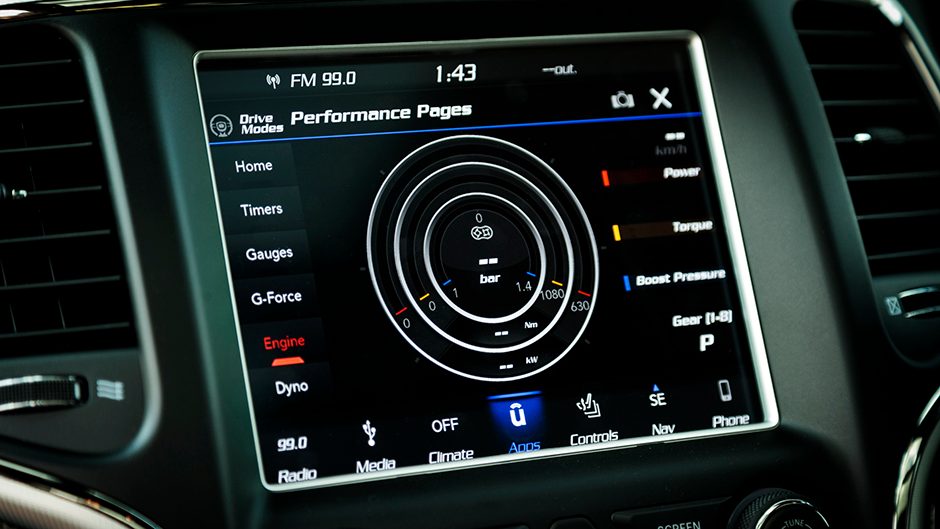
There are the active safety bits too with adaptive cruise, BSM and lane departure warning. The Valet mode might prove useful which can limit power and revs and lock out first gear and launch control for when someone wants to borrow the Trackhawk.A surround view camera is about the only omission to an otherwise complete spec list.
People might ask what’s the point? Well, it’s because they can, and hell it’s American iron. Yes, it’s loud and brash, but it’s one helluva weapon.
| Model | Jeep Grand Cherokee Trackhawk | Price | $169,990 |
| Engine | 6166cc, V8, SC/EFI, 527kW/875Nm | Drivetrain | 8-speed auto, all-wheel drive |
| Fuel Use | 16.8L/100km | C02 Output | 385g/km |
| 0-100km/h | 3.78sec | Weight | 2464kg |


